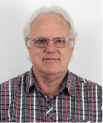Concurrent 15. Oral Presentation for: Modelling of hydrogen gas generation from overmature organic matter in the Cooper Basin, Australia
Christopher J. Boreham A *
A *
A Geoscience Australia, GPO Box 378, Canberra, ACT 2601, Australia.
The APPEA Journal 63 - https://doi.org/10.1071/AJ22354
Published: 2 June 2023
Abstract
Presented on Wednesday 17 May: Session 15
A significant portion of planned energy and mineral resource investment into Australia is now for hydrogen (H2). Whether from fossil fuels with carbon capture and storage or from electrolysis of water using renewable energy, there is a price premium for manufactured hydrogen. The production of H2 from geological sources (geologic H2) could be more cost-effective. The majority of sources for geologic H2 are abiotic and their resource potential is largely unknown. Biogenic (microbial and thermogenic) sources also exist. The focus for this study is on a thermogenic source where chemical kinetics of H2 generation from the thermal breakdown of land-plant-derived organic matter has been applied within a petroleum system modelling framework for the Cooper Basin. Modelling of mid-Patchawarra Formation coals and shales, the main source rocks for petroleum, indicate that free H2 is available at maturities >3.5% vitrinite reflectance and that a large volume of free H2 is predicted to occur in a ‘sweet spot’ deep within the Nappamerri Trough. In-situ free H2 concentrations deep within the Nappamerri Trough are predicted to be comparable to methane concentrations in productive unconventional shale gas plays. Nevertheless, exploration drilling within the Cooper Basin’s depocentre is sparse and a deep H2 system remains largely untested.
To access the Oral Presentation click the link on the right. To read the full paper click here
Keywords: chemical kinetics of hydrogen generation, Cooper Basin, geologic hydrogen, hydrogen system, natural hydrogen, coal and carbonaceous shale source rock, petroleum system modelling, thermogenic natural gas.

Christopher J. Boreham is a Principal Organic Geochemist at Geoscience Australia working in the Minerals, Energy and Groundwater Division. He obtained a Ph.D. in Chemistry at the Australian National University. Chris applies his skills to understand the evolution of petroleum and abiogenic gas in Australian basins. Chris is a member of PESA and AAPG. |


